Back in Time, Part 9: The 6.7L Cummins Strikes Back
After the release of the LML Duramax, the 6.7L Power Stroke and the high output 6.7L Cummins in 2011, brand loyalists enjoyed a tight, three-horse race for two whole model years. In case you think that’s sarcasm, judging by what’s happened over the past five years it’s practically an eternity. However, by early 2013 Ram was ready (and determined) to pull away from the rest of the pack in terms of torque. Leaning on the 6.7L Cummins platform once more, its torque output was pumped up to 850 lb-ft, with horsepower rising to 385 hp—so long as you ordered a ’13 Ram 3500, and with the new Aisin AS69RC six-speed automatic.
Just over a year later, Ford would counter with a thunderbolt of its own. The second-generation 6.7L Power Stroke, available in ’15 model year Super Duty’s, would produce 440 hp and 860 lb-ft, both of which were poised to be class-leading numbers. Then, in August of 2014, Ram turned up the heat again by revealing that ’15 model year 3500’s could be ordered with an 865 lb-ft version of the 6.7L Cummins. But Ram wasn’t done. In June of 2015, Cummins squeaked another 35 lb-ft out of the 6.7L I6 and the 900 lb-ft Cummins became available that fall in ’16 Ram 3500’s.
Essentially, from 2013 to present Ram and Cummins have had an answer for every move Ford has made with its 6.7L Power Stroke. Stay tuned, we’ll cover the most exciting times thus far in this endless battle of attrition next time—i.e. the march toward 1,000 lb-ft.
| Specs | '13- '16 6.7L Cummins | '15 6.7L Power Stroke |
| Configuration | I6 | V8 |
| Displacement | 408 ci | 406 ci |
| Bore | 4.21 inches | 3.90 inches |
| Stroke | 4.88 inches | 4.25 inches |
| Compression Ratio | 17.3:1 | 16.2:1 |
| Block | Deep-skirt, cast-iron | Deep-skirt, compacted graphite iron (CGI) |
| Rods | Powdered-metal, cracked cap | Powdered-metal |
| Pistons | Cast-aluminum | Cast-aluminum |
| Head(s) | Cast-iron with six head bolts per cylinder | Cast-aluminum, reverse-flow with six head bolts per cylinder |
| Valvetrain | OHV, four valves per cylinder, single cam | OHV, four valves, four rockers and four pushrods per cylinder, single cam |
| Injection System | Bosch high-pressure common-rail, direct injection | Bosch high-pressure common-rail, direct injection |
| Turbocharger | Holset HE351VE | Garrett GT37 |
| Intercooler | Air-to-air | Water-to-air |
| Emissions | Exhaust gas recirculation (EGR), diesel oxidation catalyst (DOC), diesel particulate filter (DPF), selective catalytic reduction (SCR) | Exhaust gas recirculation (EGR), diesel oxidation catalyst (DOC), diesel particulate filter (DPF), selective catalytic reduction (SCR) |
| Horsepower | 385 hp at 2,800 rpm | 440 hp at 2,800 rpm |
| Torque | 850 lb-ft at 1,700 rpm (’13-‘14), 865 lb-ft at 1,700 rpm (‘15), 900 lb-ft at 1,700 rpm (‘16) | 860 lb-ft at 1,600 rpm |
2013: Ram Unleashes the 850 lb-ft Cummins
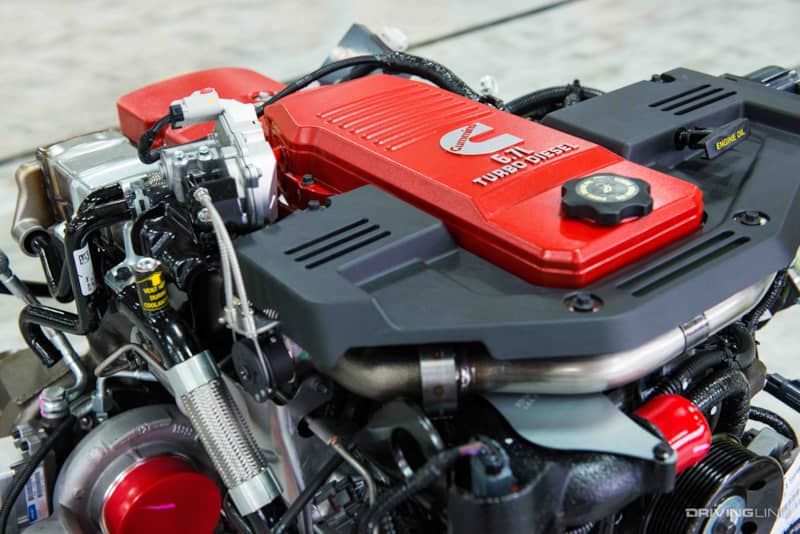
Going on the offensive, in 2013 Ram broke new ground in the torque wars. After treating the 6.7L Cummins’ computer to a calibration change, the high output version was now available with 385 hp and a class-leading 850 lb-ft of torque. But the torquiest engine in the diesel pickup segment could only be had in a 3500 series Ram and with a new six-speed automatic transmission (the Aisin AS69RC) behind it. To curb NOx emissions, Ram joined the same party as Ford and GM in adding selective catalytic reduction (SCR) to the mix, but the DEF-burning technology helped improve fuel economy by a 10-percent margin.
Necessary Emissions & Durability Changes
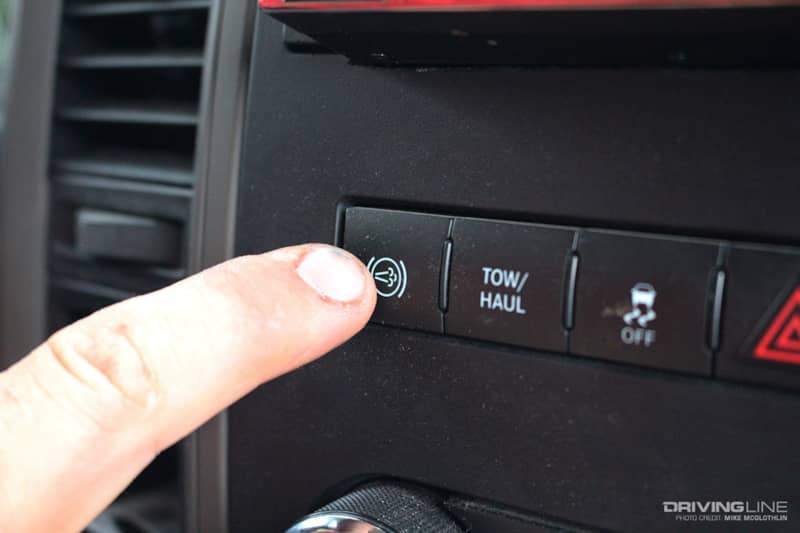
In addition to SCR, a larger exhaust gas recirculation (EGR) system helped the revamped 6.7L Cummins meet NOx standards. To cope with the added horsepower and torque, Rams destined to house the Cummins were fitted with dual radiators and transmission coolers, a more efficient mechanical engine fan and an intercooler that offered a 25-percent increase in heat dissipation. In the way of air and exhaust flow, a dual inlet Active Air Intake system could feed the engine air from two locations for maximum power and an enhanced exhaust brake function made possible by the Holset HE351VE turbocharger improved braking performance significantly.
Aisin AS69RC
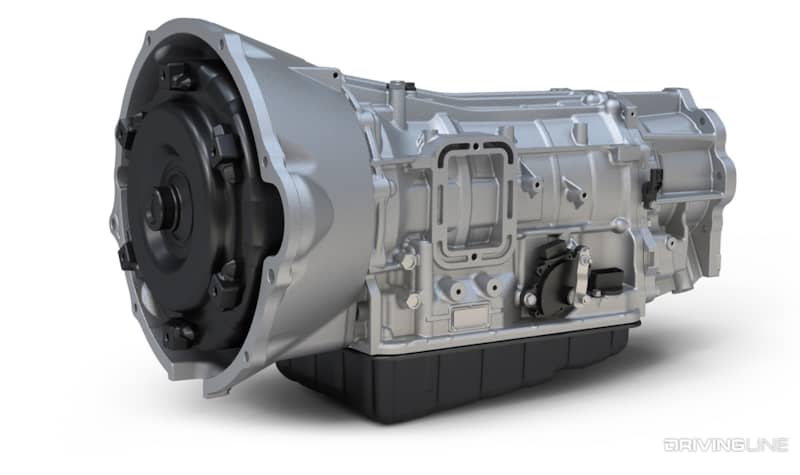
This is the vital component that made it possible to buy a Ram 3500 heavy-duty with 850 lb-ft of torque on tap: the Aisin AS69RC. For the first time in Ram’s history of producing Cummins-powered trucks, an automatic transmission was outsourced. Commercial grade in many ways, the six-speed Aisin featured a 12.2-inch diameter torque converter (the same size as the Allison 1000 at the time), a 1.06-inch diameter input shaft (vs. 1.18-inch input shaft found in Ford’s TorqShift) and a 1.68-inch diameter output shaft (vs. 1.61-inch on the TorqShift and 1.75-inch on Allison).
The ’13 Torque And Tow King
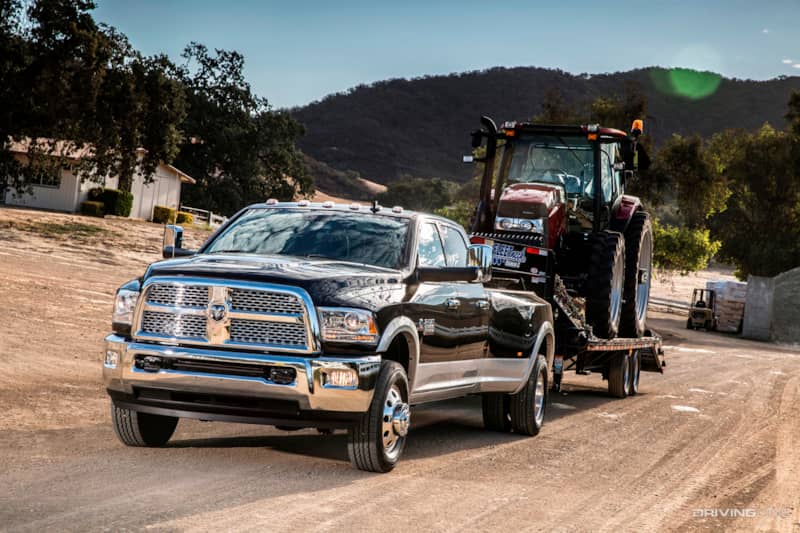
It’s important to remember that during this same period (2013-on) Ram had a much more capable heavy-duty line of trucks on its hands—and one that could out-tow Ford’s F-450 Super Duty until ‘15. When the ’13 Ram 3500’s gross combined weight rating (GCWR) of 37,600 pounds was announced, it sent shock waves throughout the industry. After all, at the time Ram’s “1-ton” had the F-450 outpaced by a large margin (the GCWR on Ford’s heaviest duty Super Duty sat at 33,000 pounds).
Second-Generation 6.7L Power Stroke
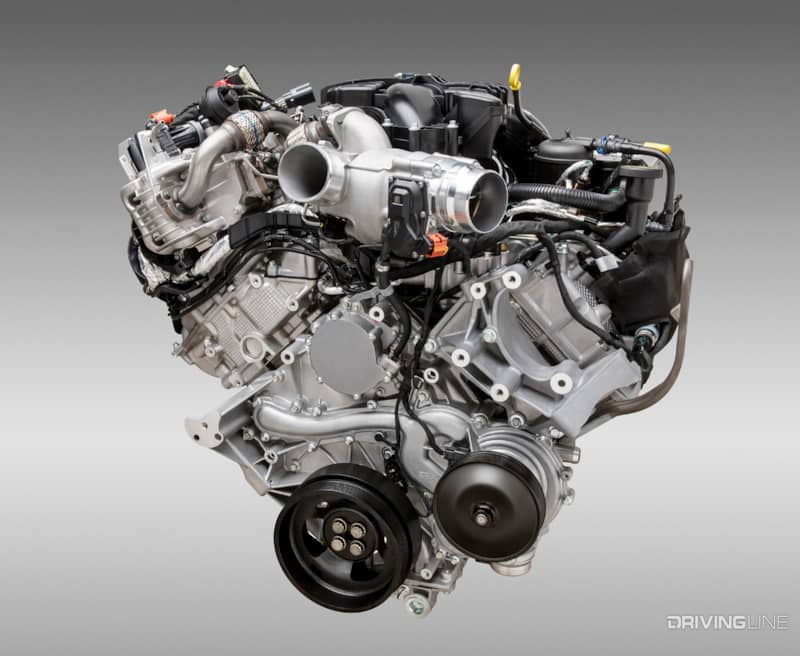
Addressing problem areas, improving its emission-control systems, increasing fuel efficiency and (of course) adding more horsepower and torque, it was no surprise when Ford’s second generation 6.7L Power Stroke launched with more grunt than Ram’s Cummins. The additional 40 hp and 60 lb-ft FoMoCo gleaned from its freshly-massaged V8 called for IROX polymer-coated lower main bearings for added durability, cylinder heads and exhaust manifolds with more meat cast into them and new, 5-layer head gaskets. Thanks to these reinforcements, peak torque was achieved at the same 1,600 rpm, though the number was now a best-in-class 860 lb-ft.
GT37 Replaces the GT32 SST
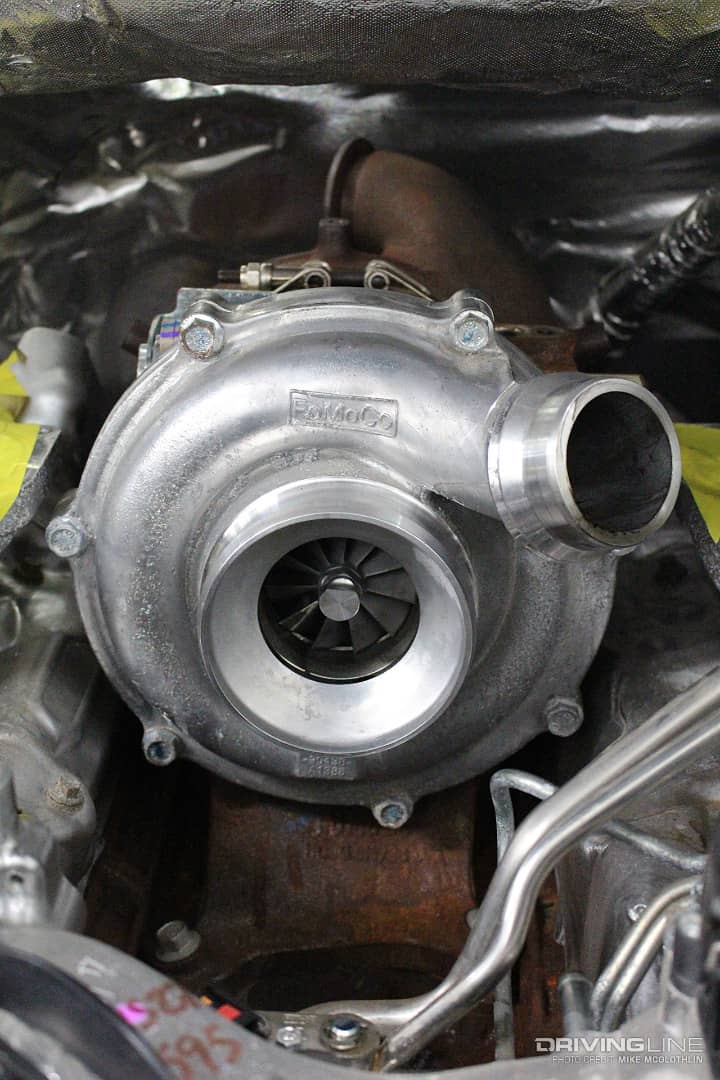
By retiring the Garrett GT32 SST turbocharger and replacing it with a GT37-based unit, Ford eliminated the most problematic component on the 6.7L engine. On ’11-’14 mills, the GT32 SST, with its smaller compressor and turbine wheels, was prone to overspeed failure. The larger wheeled GT37 operated at considerably lower rpm, didn’t require a wastegate and retained its variable geometry functionality for near-instant transient response at any engine speed. As far as airflow (a primary factor in the higher hp rating), the GT37 utilized a 61mm compressor wheel (vs. the dual 46mm wheels employed in the GT32 SST) and a much larger 72.5mm turbine (vs. 64mm) for optimum high-rpm exhaust flow.
Revised Fuel System and Stroked CP4.2
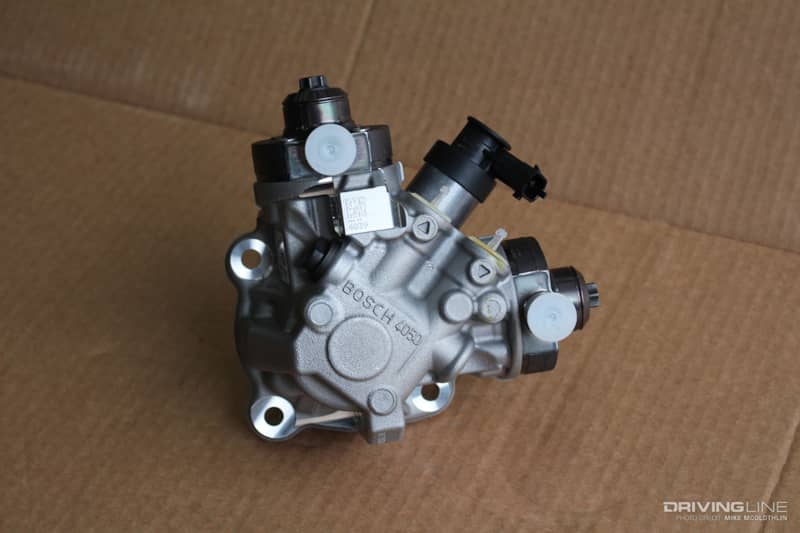
Matching the higher-flowing turbocharger, more fuel volume was introduced to achieve the 6.7L Power Stroke’s horsepower and torque gains as efficiently as possible. This included a Bosch CP4.2 high-pressure fuel pump with increased camshaft stroke, which allowed it to move roughly 9-percent more fuel. The Bosch piezo injectors were revised, too, equipped with nozzles that provided better in-cylinder atomization.
Out-Torquing Ford Once More
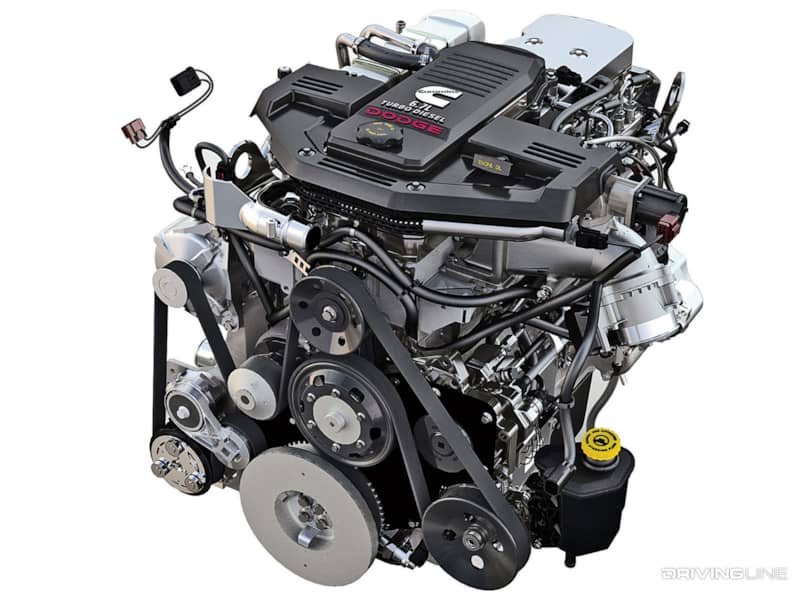
After allowing Ford to enjoy a whole five months atop the headlines with its 860 lb-ft Power Stroke, Ram reclaimed the crown in August of 2014 with its 865 lb-ft announcement. Like the previous high output version of the 6.7L Cummins, the extra 15 lb-ft of torque came by way of a few ECM tweaks, with no major hard-part or fuel system changes being required. However, and as has been the case since 2013, the 385hp, 865 lb-ft H.O. engine option could only be had in 3500 series form—and with the Aisin AS69RC six-speed automatic backing it.
First to 900 LB-FT
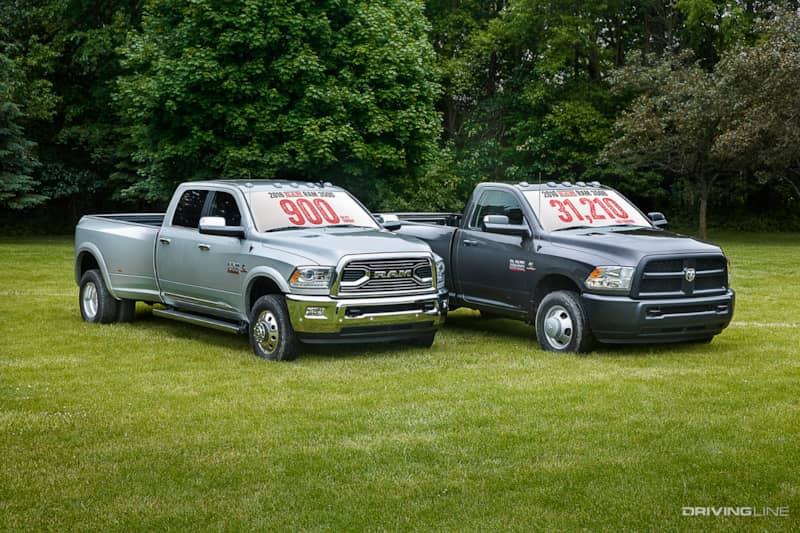
In June of 2015, without any provocation from Ford or GM, Ram became the first of the Big Three to offer 900 lb-ft of torque in a diesel pickup. Further ECM re-calibrating from Cummins turned out another 35 lb-ft, with peak twist still available at just 1,700 rpm. The move would prove golden for Ram’s marketing department, which played up the big “900” every chance it got. Now packing some 250 lb-ft more than the 6.7L Cummins debuted with in ’07.5, some began to wonder how much further the cast-iron block and the same-old hard parts could be pushed. Ram and Cummins would have an answer for that soon enough, however…
Now that the 900 lb-ft milestone had been reached, it was only a matter of time before Ford and GM answered with torque increases of their own—and so began the push toward four-digit twist.







